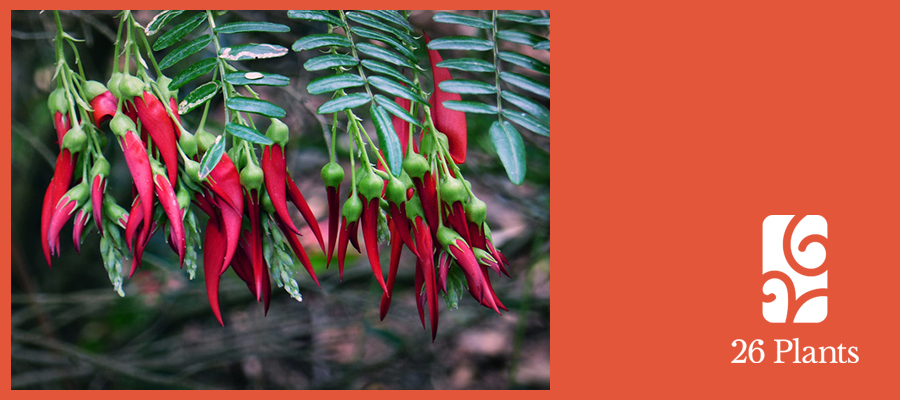Kākābeak
Clianthus maximus
Hayden Maskell, New Zealand

Kākābeak
Clianthus maximus – maximus!
Our Latin name means
‘greatest glory flowers’
A fitting tribute.
But most know us as kākābeak:
ludicrous! Those dour brown parrots
should be so lucky.
The spindly red blossoms
of rata and pōhutukawa are
lovely miniature fireworks
but they hardly hold a candle
to our sultry crimson tongues,
shaped like spice and aphrodisiacs,
so lurid even cameras blush.
Alas, we are victims of our own appeal,
soft-stemmed souls sapped by slugs and snails,
undone by our penchant for crumbly clifftops.
Of course, we aren’t gone, exactly –
beauty endures
After all, glory flowers:
Clianthus maximus – maximus!
APTRONYM
Aotearoa might mean ‘land of the long white cloud’, but I think it might just be land of the mostly green bush. Bugger the black jerseys: green is our colour, in every shade and hue and luminosity. We’re a land of dramatic, moody paintings. Washes of watercolour, or thick oils daubed on heavy canvas. We are not the home of orchids, roses, hibiscus, cactus flower or gerbera. Even our most famous birds, with one or two notable exceptions, are entirely brown or green.
Which is why, every now and again, a particular plant makes a splash with vibrancy. Ngutukākā, or kākābeak, is such a plant.
It looks almost tropical, a bird of paradise, or some jungle monster that stinks its alluring stink to high heaven. The ngutukākā blows raspberries at you with dozens of bright red tongues. We have other brightly-coloured blossoms: pōhutukawa and rata have their miniature red firework flowers, or kōwhai its canary yellow bells. But kākābeak is the only native plant I know of that could be described as ‘lurid’.
It is named for the beak shape, rather than the colour; the kākā parrot, like most of our famous birds, has a loud voice but rather muted plumage. The vivid red flowers of the kākābeak are beautiful and nutritious for all manner of critters, which is an unfortunate recipe for native flora: this stunner is critically endangered.
Ngutukākā has no defences against introduced pests. Deer, goats, pigs, hares, stock and introduced garden snails (which are often found in the wild) continue to decimate any vestiges of a wild population, and many home gardens as well.
To date there are only around 150 of these plants known in the wild. I wasn’t able to find any myself, but did manage to find the domesticated version in my local garden centre, as it’s widespread in cultivation. There’s not a lot known of the genetic diversity of these plants, and while easily grown from seed and cuttings, cultivated plants tend to live very short lives of between two and four years. Even in the wild, kākābeak only last 15-20 years. As the saying goes, the flame that burns twice as bright burns half as long.
It’s an outrageous plant, so much so that even the rather dry New Zealand National Vegetation Survey Databank lists the kākābeak with the short code CLIMAX – short for the scientific name clianthus maximus, but also a fine example of an aptronym.
Image: Photograph by Bernard Spragg, released into the public domain
